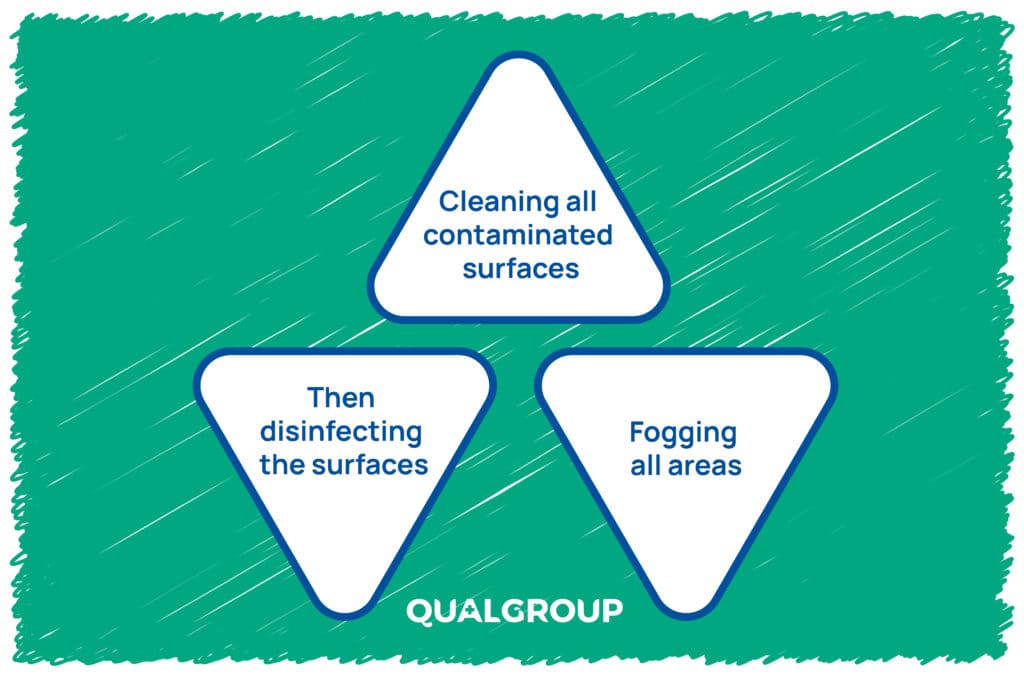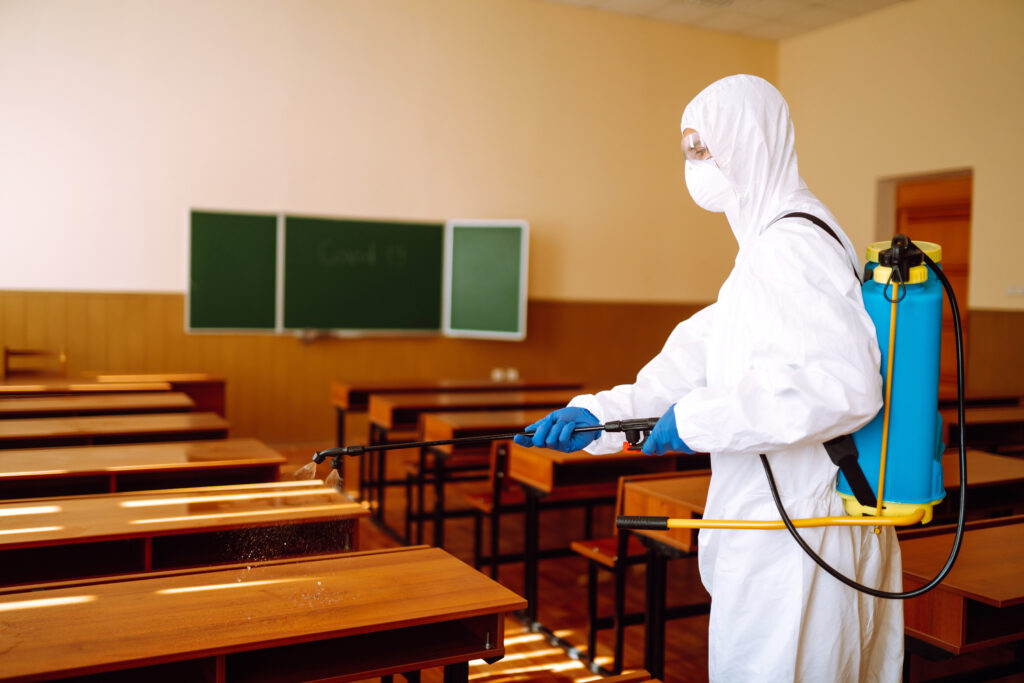How effective is Fogging practices to contain virus outbreaks in schools and daycare centers?
With the recent outbreak in virus and other sickness in New Zealand’s day care centers, the need for decontamination and sanitization is paramount. An efficient decontamination and sanitization process helps to rid the surfaces of any lingering germs or viruses and fogging is an essential part of this.
What is fogging?
To understand fogging – it is the spraying of hydrogen peroxide and silver ion solution on surfaces to rid of contamination. However, it is important to note, that it has been scientifically proven and the Ministry of Health observes that that fogging a room will not completely rid the room of the germs found here.
To understand fogging – it is the spraying of hydrogen peroxide and silver ion solution on surfaces to rid of contamination. However, it is important to note, that it has been scientifically proven and the Ministry of Health observes that that fogging a room will not completely rid the room of the germs found here.
Does it help?
As per Bridget Gardner – a pioneer in Australia’s Green Cleaning movement also notes in her blogs that surfaces are often colonized by bacteria that make their own protective layer known as biofilms. These layers are so thick that a simple wipe, disinfectant and fogging is insufficient.
Cleaning and disinfecting High Touch Points
An important aspect of all cleaning plans should have plans to clean and disinfect High Touch Points (HTPs). QualGroup’s two-step cleaning process includes –
An important aspect of all cleaning plans should have plans to clean and disinfect High Touch Points (HTPs). QualGroup’s two-step cleaning process includes –
- Cleaning all mapped out HTPs on arrival of cleaning
- Disinfecting it on departure.
How can the cleaning industry make a difference?
The most effective way to ensure fogging helps with sanitization and decontamination is – To thoroughly clean all related surfaces, disinfect the surface and then proceed to fog the area.
The most effective way to ensure fogging helps with sanitization and decontamination is – To thoroughly clean all related surfaces, disinfect the surface and then proceed to fog the area.

1. Compatible cleaning products
Care should be taken to see that the chemicals used for cleaning and disinfecting the surface are compatible with each other. To ensure compatibility, our cleaning technicians at QualGroup cleans the surface using Perdiem – which is Accelerated Hydrogen Peroxide technology for high productivity cleaning and disinfecting and Oxivir in our fogging process which is a health care grade cleaning chemical.
Care should be taken to see that the chemicals used for cleaning and disinfecting the surface are compatible with each other. To ensure compatibility, our cleaning technicians at QualGroup cleans the surface using Perdiem – which is Accelerated Hydrogen Peroxide technology for high productivity cleaning and disinfecting and Oxivir in our fogging process which is a health care grade cleaning chemical.
2. Zoning for maximum efficiency
Most effective way to curb an infection in a particular area is to zone the contaminated area as less infectious to highly infected and work your cleaning from the least infected to highly infected. The way QualGroup identifies and list the decontamination zones in the building are:
Most effective way to curb an infection in a particular area is to zone the contaminated area as less infectious to highly infected and work your cleaning from the least infected to highly infected. The way QualGroup identifies and list the decontamination zones in the building are:
- Zone 1: Identify areas where the infected person/s spent most time in, and surfaces on which the virus would have potentially been shed the most.
- Zone 2: Identify similar areas and surfaces that were used by personnel with whom the infected person/s spent time in close contact over this period and may have infected.
- Zone 3: Identify areas where the infected person/s would have passed through on a regular basis, e.g. entrances, lifts, stairs and walkways.
- Zone 4: Identify the High Touch Point (HTP) surfaces in all other areas of the building that will require a full Preventative Clean. Then Schedule the Decontamination Clean, starting in zone 4 and working toward zone 1 (cleanest to dirtiest).
3.
Emphasis on High Touch Points
Every day care center or school has High Touch Points (HTP) like door knobs, window rails, bathroom taps, play equipments and many others. We follow a two-step cleaning process for all the HTPs – cleaning on arrival and disinfecting on departure. When this is combined with fogging, it ensures that the fogging process is effective.
Every day care center or school has High Touch Points (HTP) like door knobs, window rails, bathroom taps, play equipments and many others. We follow a two-step cleaning process for all the HTPs – cleaning on arrival and disinfecting on departure. When this is combined with fogging, it ensures that the fogging process is effective.

The two-step cleaning process of cleaning is a cleaning process that QualGroup employs in our daily cleaning schedule and this helps to significantly reduce the level of infection and sickness in childcare centers and schools.
In conclusion:
When looking to sanitise and decontaminate an infected area, always check if the cleaning service provider provides the three services-
When looking to sanitise and decontaminate an infected area, always check if the cleaning service provider provides the three services-
- Clean the area thorough
- Disinfect the area to completely rid of bacterial presence and then
- Fog the area.


